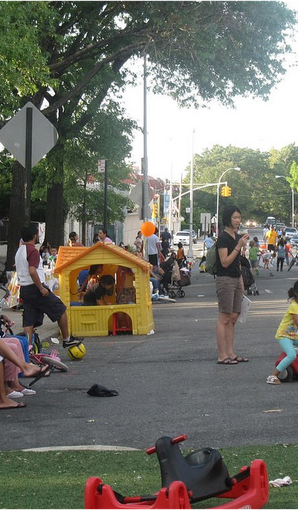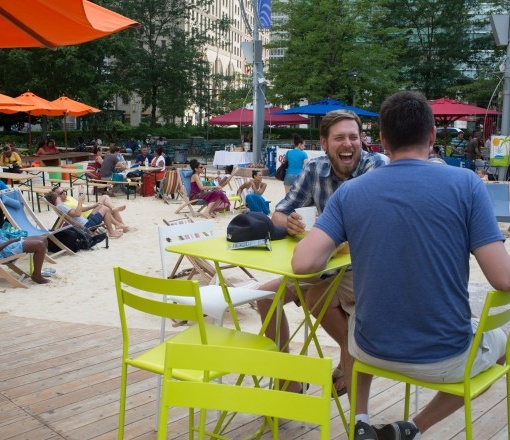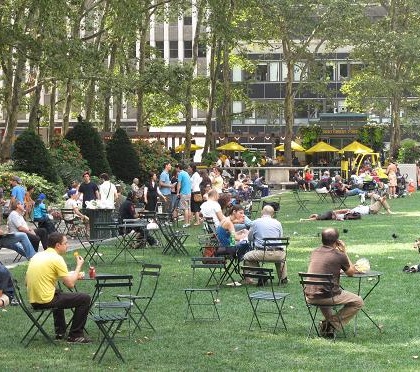
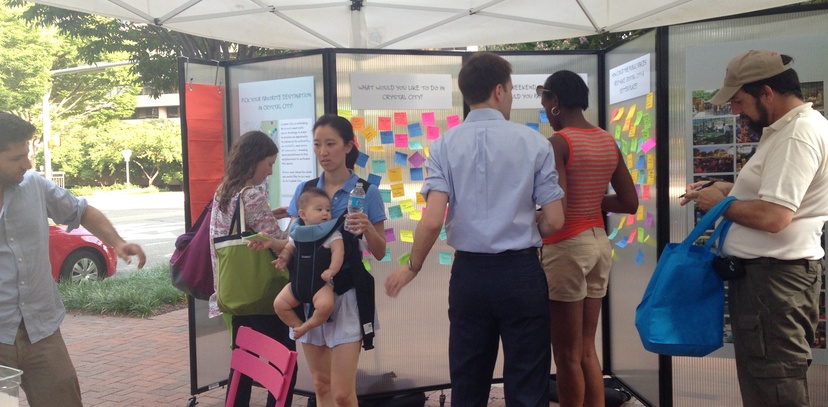
Placemaking is a concept that has gained significant traction in the US and UK, however their approaches to it are quite different. In the US placemaking focuses on the creation of successful public realm projects, whereas in the UK placemaking encompasses broader notions of place that go beyond a defined space like a park or street, to include whole communities and neighbourhoods. In this blog Clémence Morlet talks about the work of Project for Public Spaces, an organisation based in New York that has led the way in state-side notions of placemaking since 1975. Agencies in the UK like Publica are taking similar approaches and research groups like Teatrum Mundi at LSE Cities proves there is a growing interest in this area, but there is still no equivalent UK agency advocating at the same scale for people-centred public spaces.
_______________________________________
What are people doing under a pergola with sticky notes and pencils? They are expressing their thoughts, ideas and needs for the public space surrounding their home or office, the public space they usually visit or simply pass through without engaging with it. This pop-up workshop took place in July 2014 in Crystal City, a neighborhood across the river from Washington DC. You could have found this scene in any of the cities that Project for Public Spaces (PPS) was engaged with. PPS is a non-profit organization based in New York City that excels in the art of Placemaking. After having worked there for a year, I would like to share why I consider it as one of the greatest central hubs of the global Placemaking movement.
“Placemaking is a quiet movement that inspires people to collectively reimagine and reinvent public spaces as the heart of every community... Strengthening the connection between people and the places they share, Placemaking refers to a collaborative process by which we can shape our public realm in order to maximize shared value. More than just promoting better urban design, Placemaking facilitates creative patterns of use, paying particular attention to the physical, cultural, and social identities that define a place and support its ongoing evolution ” (Project for Public Spaces).
Through projects in the US and all over the world, PPS has set itself apart with its innovative place-based and community-driven approach when advising communities about the activation of the public spaces they care for. Use has to be prioritized over design and capital-intensive construction. Place evaluation and user analysis help us understand the different needs and characteristics of places. Community workshops, pop-up surveys in public spaces and meetings with stakeholders are a big part of every project as PPS consider locals as the experts when talking about the public realm they want to transform.
Method #1: The Power of 10
The Power of 10 is used as a theoretical concept that helps to start off the Placemaking process making easier to visualize goals and start a conversation. The Power of 10 is the idea that a place should accumulate no less than 10 activities or uses in order to offer opportunities for everyone (e.g. a place to sit, playgrounds to enjoy, art to touch, music to hear, food to eat, history to experience or people to meet). Not only working at local scale, the Power of 10 is applied at neighbourhood and city levels.
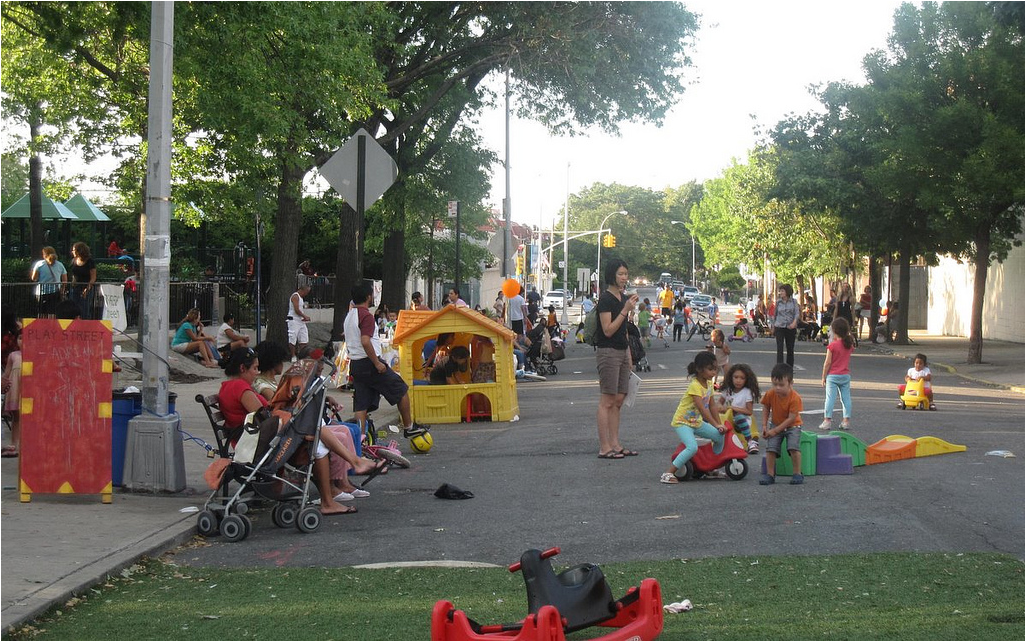
[Image: A Play Street in Queens, New York City]
Method #2: Lighter, Quicker, Cheaper
The strategy widely used at Project for Public Spaces to create successful and lively public spaces is Lighter, Quicker, Cheaper (LQC) interventions. LQC interventions consist of a low-cost and high-impact incremental framework that enables short-term improvements of underused public spaces like streets. Temporary street closures for neighbourhood street parties for example, are often criticized for obstructing traffic flows, but streets and sidewalks compose approximately 80% of a city’s public space. Streets and sidewalks are too often dominated by motorized vehicles passing through rather than being used by the communities that they are based in.
The transformation of Downtown Detroit in Michigan into a beach is a good example of how a Lighter, Quicker, Cheaper intervention acted as a catalyst to create a destination, empower the community to engage in the public life and make the city liveable and lively once again.
The first step in the LQC process is to provide amenities and public art. 'Light touch' amenities like flexible seating, books and/or game kiosks or interactive public art create a sense of place, an identity, a desire and an interest to come, stay and return. One of the first PPS projects was Bryant Park where flexible amenities have created an adaptable and evolving space that makes people feel like coming back.
The second step of the LQC interventions is to plan events and interventions that aim at building momentum, showcasing local talents and building partnerships. These events principally serve to encourage communities to act collectively. It is fundamental to build on local assets to ensure that these events can evolve into ongoing interventions when the community has the experience and means to undertake them. Events can generate revenues essential to maintenance and management. These events work best if they are supported by local businesses and reclaimed materials are commonly used to keep costs down.
These light touch interventions show that planning does not always have to be slow. LQC interventions create new uses at low cost and make a space active and attractive for a short while. These temporary strategies create interim spaces that empower communities and stakeholders to take action for longer-term change. The real strength of the LQC approach is the minimal risk in creating low-cost short-term lively public spaces. Interim spaces can act as living laboratories to see what works and what doesn’t and can attract partners to invest in long-term transformations and empower the community to work, volunteer or participate in public life. LQC is a framework for future development and investment built on a people-centred, evidence-based vision.
“Placemaking is a quiet movement that inspires people to collectively reimagine and reinvent public spaces as the heart of every community... ” (Project for Public Spaces).
